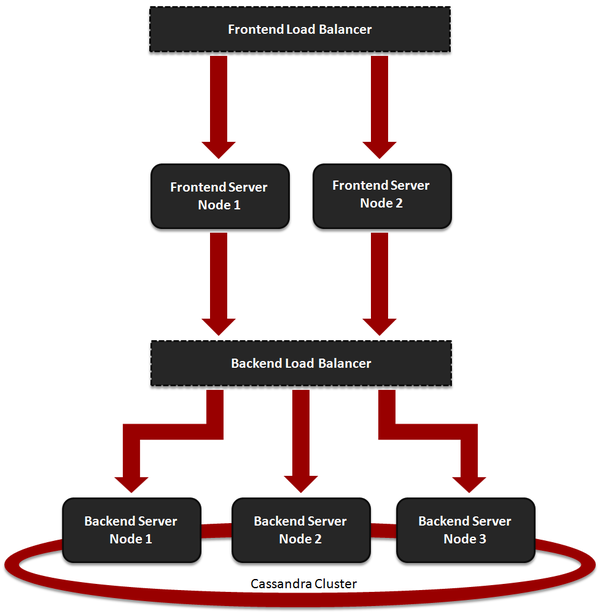Deployment Scenarios
Genesys Web Engagement has two flavors of deployment: Standalone is appropriate for a lab environment, while Clustering is geared towards a production environment. Select the appropriate tab below for details about each deployment scenario and the tasks to install and configure GWE.
Overview
This deployment is appropriate for a lab environment and consists of a single Frontend Server and a single Backend Server — they can be installed together on the same host.
Deployment Tasks
Complete the following tasks to deploy Genesys Web Engagement:
- Review the prerequisites. Make sure your planned environment meets the requirements for Genesys Web Engagement and contains the right versions of the required Genesys components.
- Install the Web Engagement servers. Complete these procedures to configure and install the Backend and Frontend servers.
- Configure Genesys Rules System. You need to configure Genesys Rules Authoring Tool and Genesys Rules Development Tool to work with GWE.
- Configure the generic Cassandra settings. Set the Java heap size and configure the embedded Cassandra instance in the Backend Server.
- Install the Plug-in for Interaction Workspace. You will need this plug-in to enable chat and web callback engagement features in Interaction Workspace.
- Install the Plug-in for Genesys Administrator Extension. You will need this plug-in to create categories for your application and enable GWE on your website.
- Configure your required security. You can enable SSL, configure TLS for Genesys and GWE servers, and enable authentication for the Backend Server, Interaction Workspace, and the Engagement Strategy.
- Configure your required features. You can set up the pacing algorithm, enable authentication and SSL, configure UTF-8, and more.
- Develop an application. You're ready to move on to the Developer's Guide where you will learn how to develop and customize an application, not to mention create categories, business events, and rules.
Overview
This deployment scenario is appropriate for a production environment and consists of multiple Frontend and Backend servers. Ideally, these servers should be installed on separate hosts to provide the best performance and the best high availability.
The figure below shows the minimum solution size Genesys recommends for a production deployment.
Deployment Tasks
The Deploying and Configuring the Genesys Web Engagement Cluster page includes all the procedures required to configure and deploy your GWE cluster:
- Review the Prerequisites. Make sure you review these before you get started.
- Update the Backend Server Application. In this procedure you update the Backend Server Application object in Genesys Administrator and run the Provisioning Tool.
- Configure the Frontend Server Nodes. Configure each of your Frontend Server nodes to work with load balancing and copy the server directory to the node host.
- Configure the Backend Server nodes. Configure each of your Backend Server nodes to work with load balancing and copy the server directory to the node host.
- Configure Load Balancing. This guide includes sample configurations for Apache, although your settings may be different depending on the architecture of your cluster.
- Configure Cassandra for the Cluster. Make sure your Cassandra nodes (Backend Server nodes) are configured for a cluster.
- Enable SSL for the Cluster. You need to use a certificate issued by a third-party Certificate Authority for a production environment.
- Configure Rules Deployment for the Cluster. Set up one of your Backend Servers to be in charge of rules deployment over the cluster.
- Start the Server Clusters. Start your load balancers, Backend Server cluster, and Frontend Server cluster.


